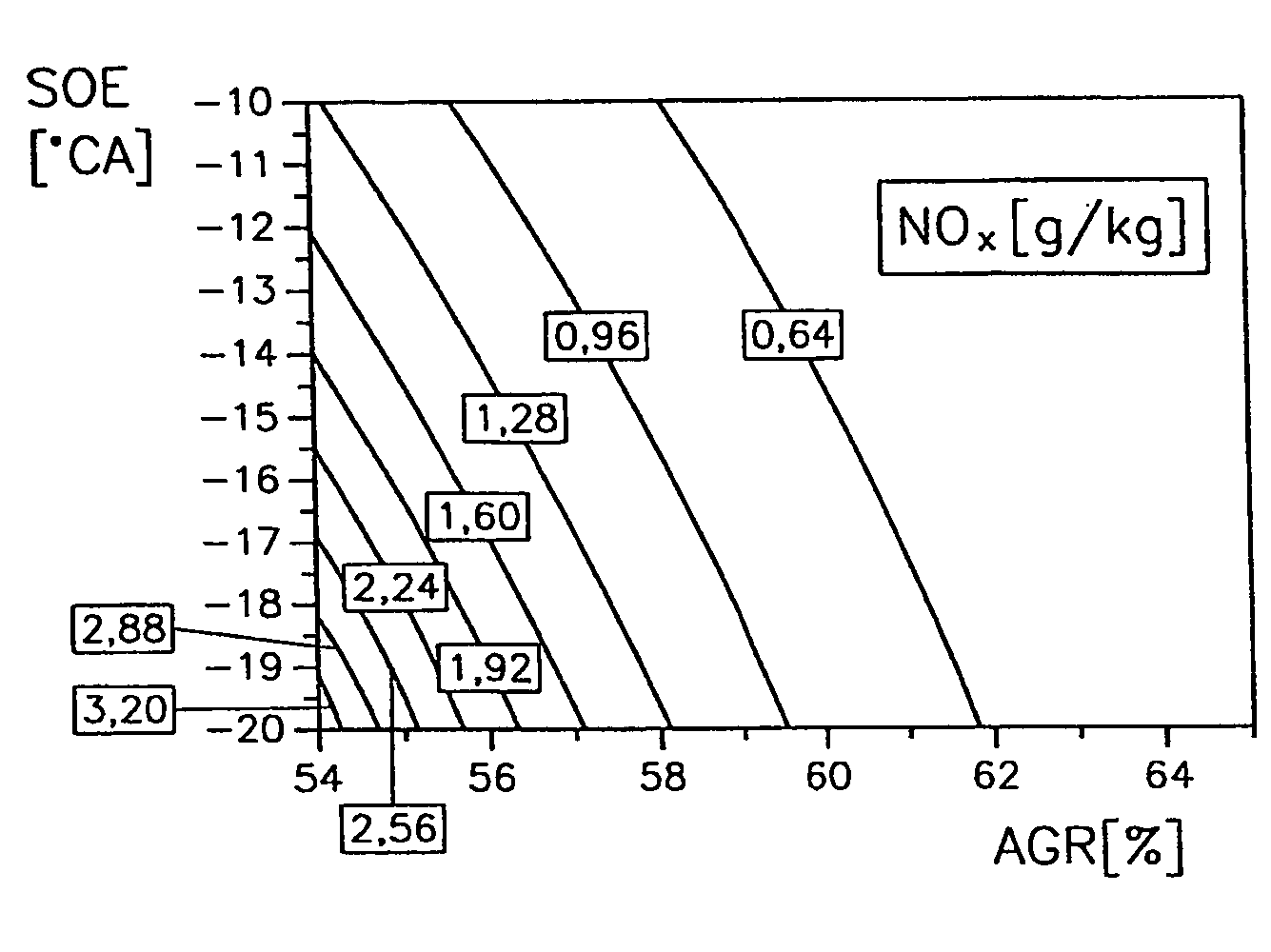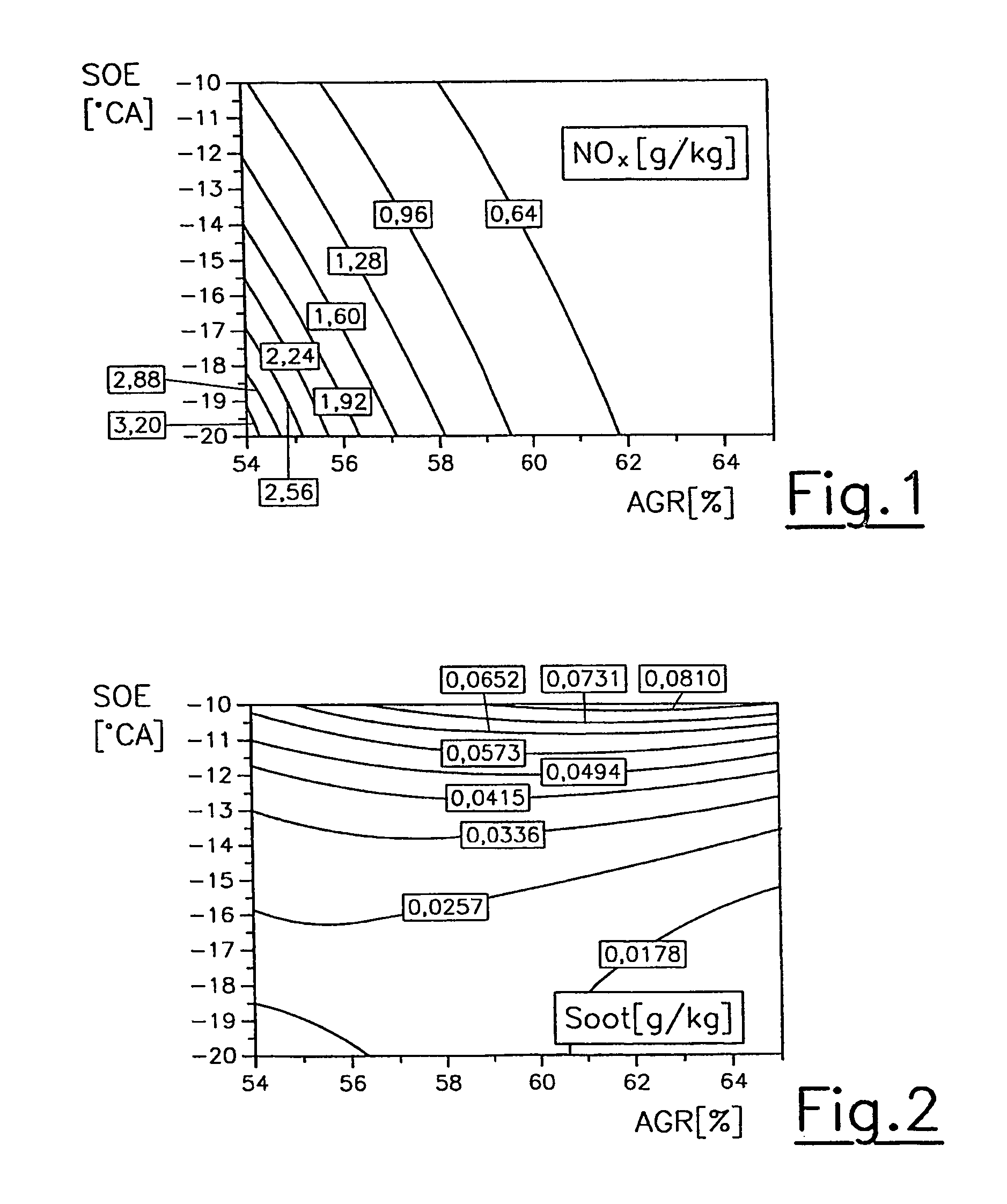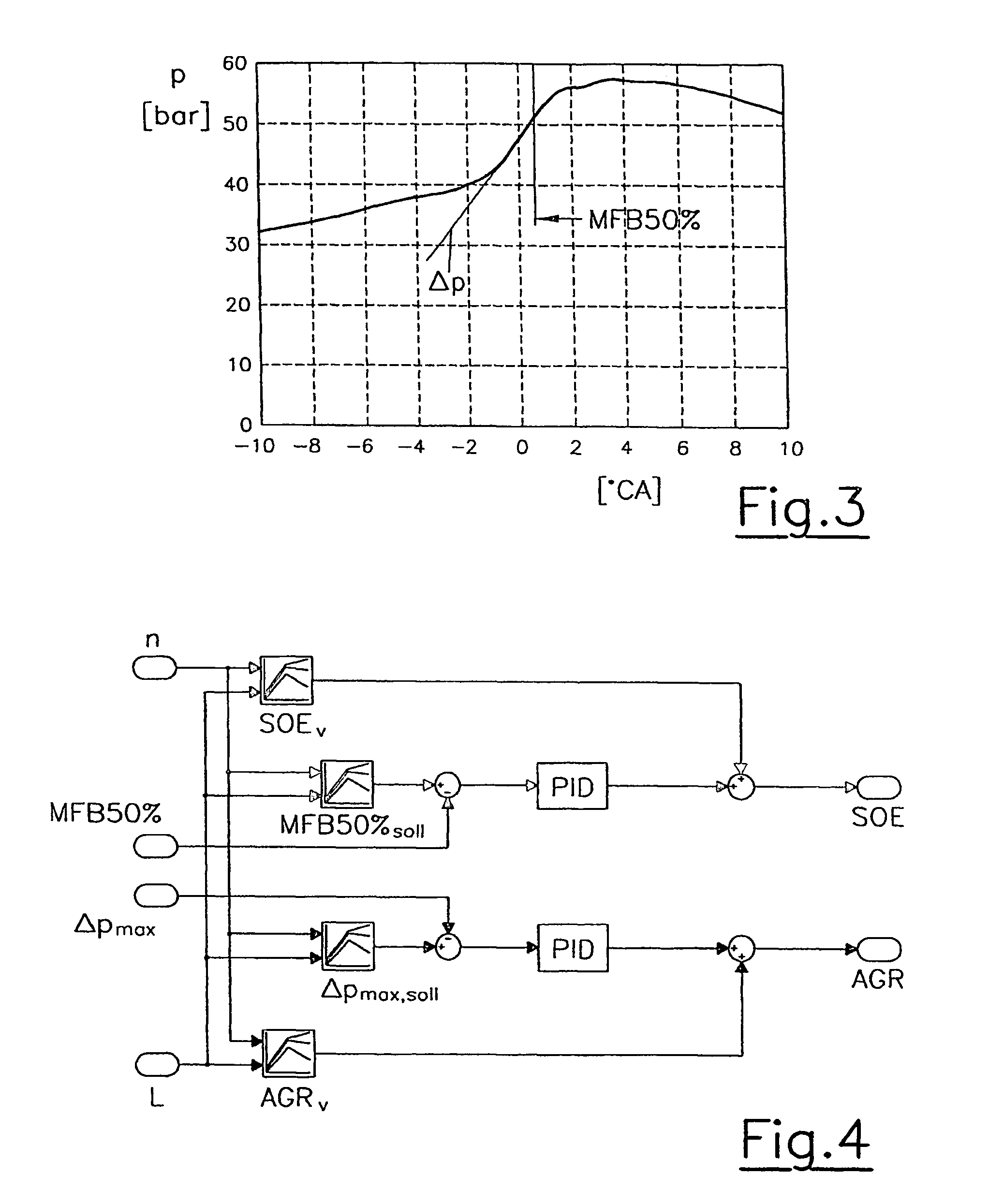[0025]In accordance with the invention, this makes it possible to detect a condition variable in the cylinder, preferably the pressure, the temperature, the
ion flow or the output
signal of an optical principle of measurement as a function of the
crank angle and to obtain therefrom a
signal about the cylinder condition, to determine from the cylinder condition
signal at least two characteristic cycle values from the group comprising
mass fraction of the injected fuel burned,
maximum pressure increase in the cylinder,
combustion noise, start of combustion or duration of combustion, to compare the determined characteristic cycle values with desired values for the characteristic cycle values entered in a characteristic diagram and to compute a given difference between the two values and to supply the difference to a regulation
algorithm and to adjust as a correcting variable the time of fuel ignition of at least one injection event and / or the
inert gas fraction in the cylinder in order to stabilize combustion and / or to minimize
noise and
exhaust emission. This makes it possible to stabilize combustion and to minimise
noise and
exhaust emission. Preferably, there is provided that the 50 %
mass fraction burned of the injected fuel and the maximum in-
cylinder pressure increase is determined.
[0030]Within the scope of the method developed, each of the actual characteristic cycle values developed are then compared with the desired value for the characteristic cycle values each entered in a characteristic diagram depending on the engine speed and the engine load, and a given difference between the two values is calculated. This difference is next supplied to a regulation
algorithm. The
regulator dynamically calculates the new engine operation parameters such as injection timing and recirculated exhaust mass needed in order to maintain the desired cylinder condition. A precontrol value entered in a respective characteristic diagram is added to the values calculated by the
regulator in order to improve the dynamics of the
system as a whole.
[0031]As contrasted with conventional control processes, the method of the invention also allows for stable control of the
combustion process with optimum emission conditions even in the
transient mode, the timing of
fuel injection being controlled by at least one injection event and the maximum in-
cylinder pressure increase being concurrently controlled via the
inert gas fraction in accordance with the values prescribed by the
regulator. In accordance with an advantageous implementation variant of the invention, there is provided that the correcting variables timing of
fuel injection of at least one injection event and
inert gas fraction inside the cylinder be adjusted simultaneously by means of the regulation
algorithm.
[0050]If injection timing is determined by simple control, that is to say without any feedback about the actual combustion situation, this predetermined injection timing can be corrected dynamically. Correction is thereby performed as a function of the difference between the desired value required for the ratio
fresh air mass to
inert gas mass and the measured and / or calculated actual value for the ratio
fresh air mass to
inert gas mass inside the cylinder. If the actual value for the ratio
fresh air mass to
inert gas mass is smaller than the desired value for the ratio fresh
air mass to inert gas mass, with the inert gas
mass fraction inside the cylinder being too high or the fresh
air mass fraction too low as a result thereof, injection timing is advanced. If the actual value for the ratio fresh
air mass to inert gas mass is higher than the desired value for the ratio fresh air mass to inert gas mass, with the inert gas
mass fraction being too low or the fresh air mass fraction too high as a result thereof, injection timing is retarded.
[0051]As an alternative or in addition thereto, correction may be performed as a function of the difference between the desired value required for the air / fuel ratio in the exhaust gas and the measured and / or calculated actual value for the air / fuel ratio in the exhaust gas. If the actual value of the air / fuel ratio in the exhaust gas is smaller than the desired value of the air / fuel ratio in the exhaust gas, with the inert gas mass fraction in the cylinder being too high as a result thereof, injection timing is advanced. If, by contrast, the actual value of the air / fuel ratio in the exhaust gas is greater than the desired value of the air / fuel ratio in the exhaust gas, with the inert gas mass fraction in the cylinder being too small as a result thereof, injection timing is retarded.
[0053]By correcting injection timing and / or the combustion situation as a function of the difference between the actual and the desired values for the ratio fresh air mass to inert gas mass in the cylinder and / or the air / fuel ratio in the exhaust gas, a difference between the transient and the stationary combustion noise resulting from transiently occurring differences between the cylinder charge and the stationary desired value may be avoided in dynamic engine operation.
 Login to View More
Login to View More  Login to View More
Login to View More 


